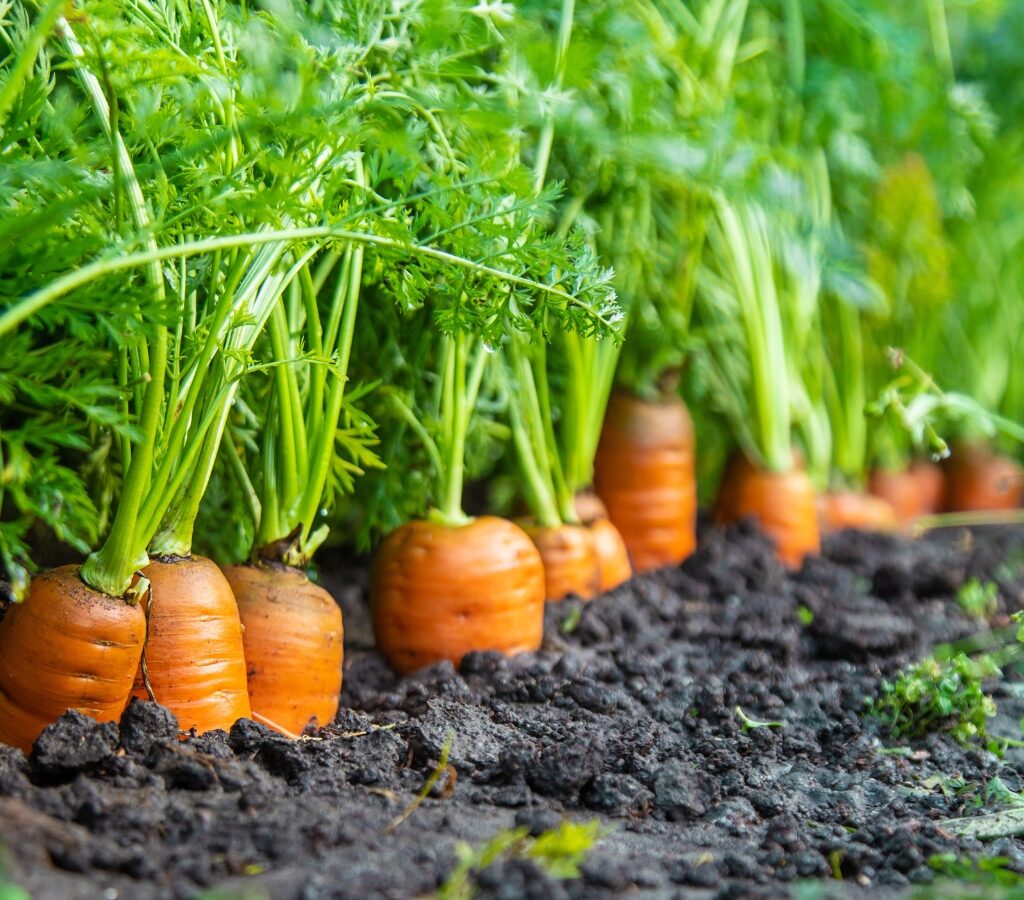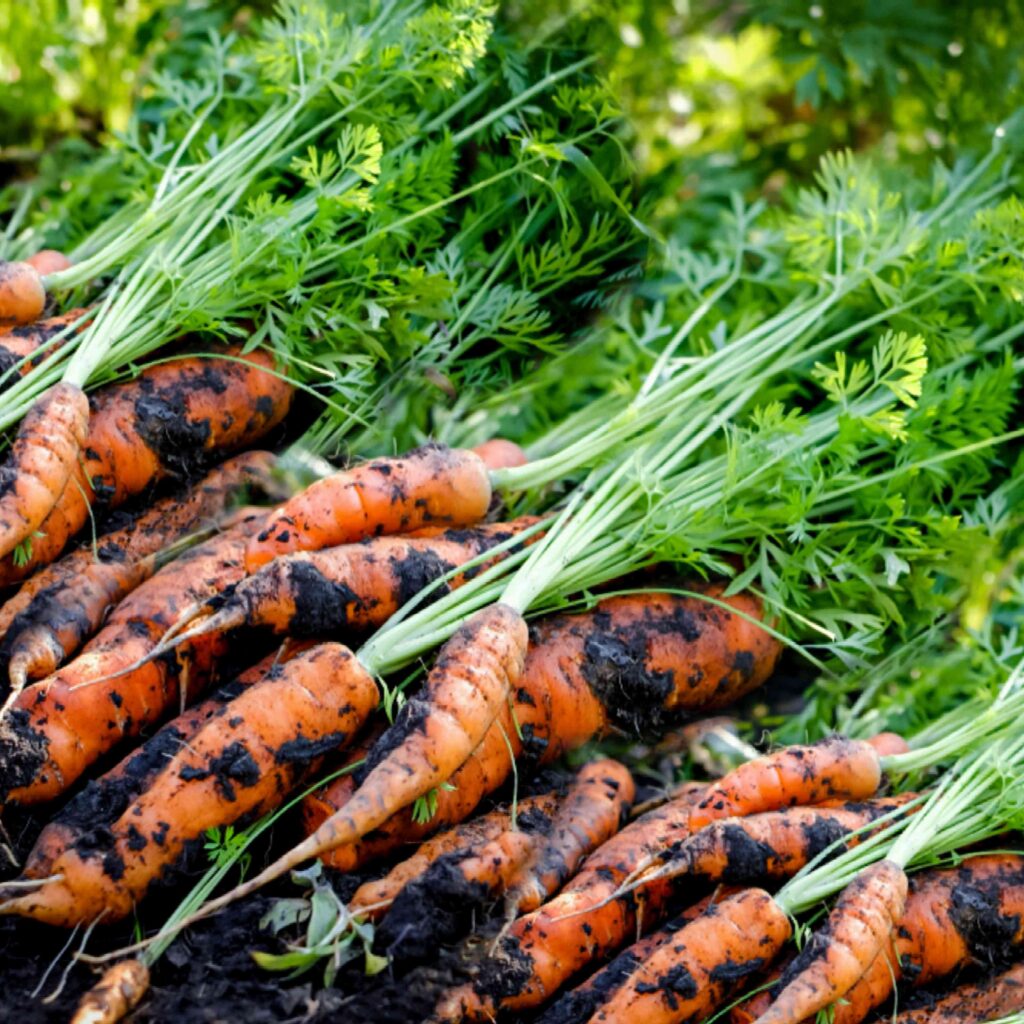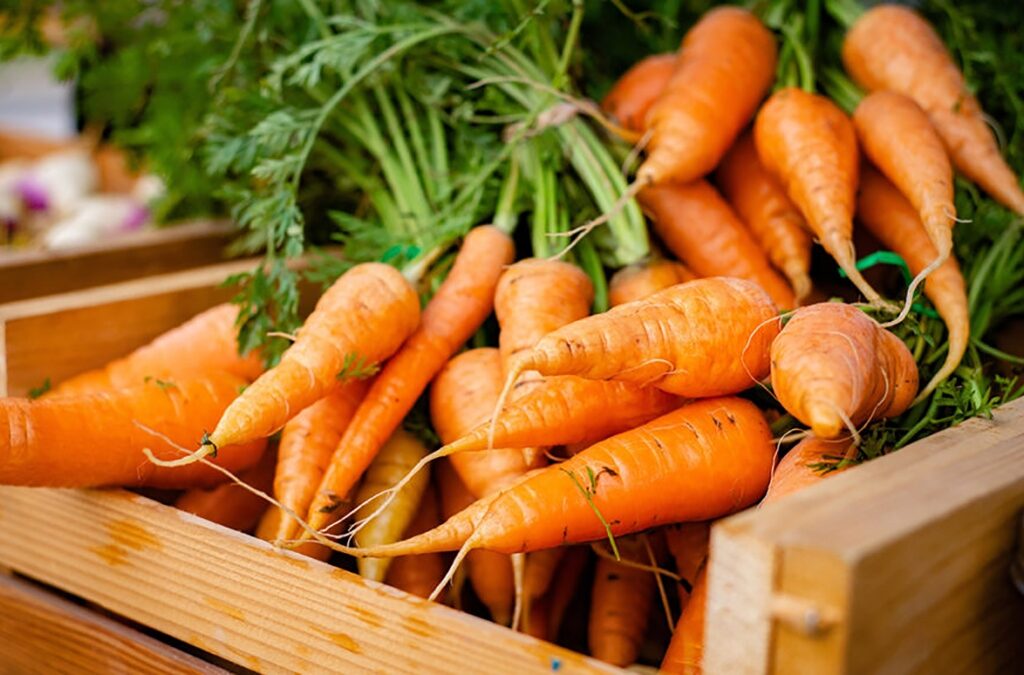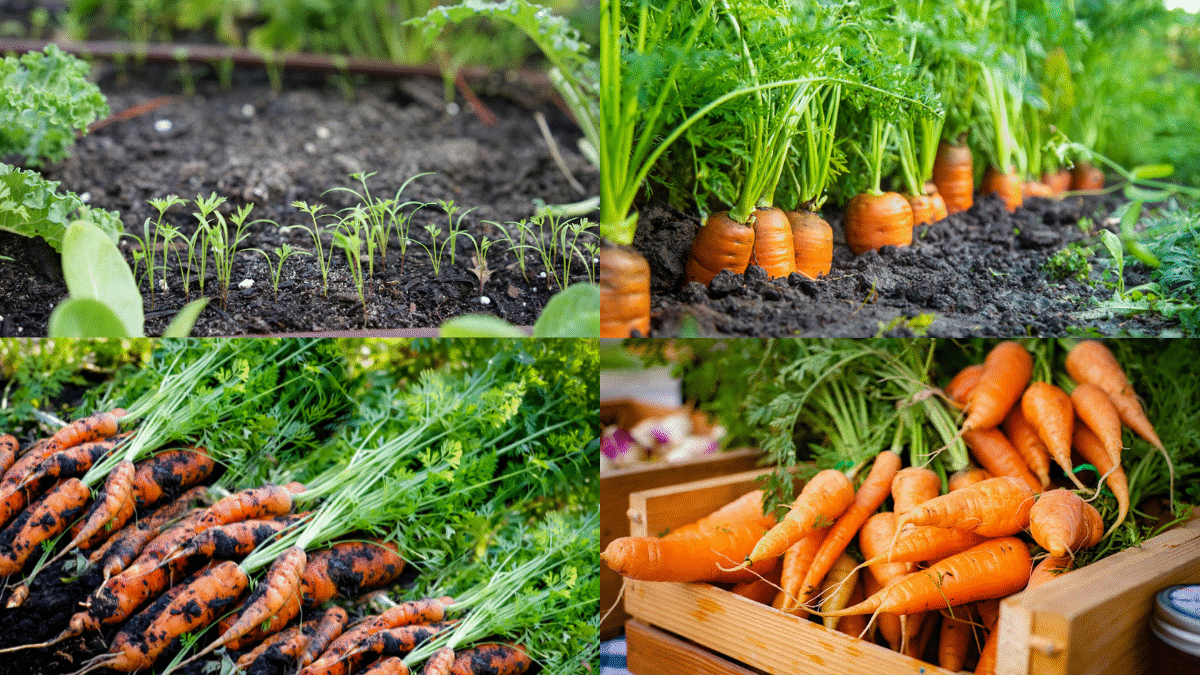There’s nothing quite like the satisfaction of pulling fresh, brightly colored carrots from your own garden. Sweet, crunchy, and packed with nutrients, homegrown carrots taste far superior to store-bought ones. Whether you’re a beginner or an experienced gardener, planting carrots is one of the easiest and most rewarding gardening activities you can try.
In this detailed guide, we’ll cover everything you need to know about planting carrots, from selecting the right variety to harvesting those crisp, flavorful roots. Ready to get your hands a little dirty? Let’s dive in!

Why Grow Carrots at Home?
Carrots are a staple in kitchens worldwide for good reason. Not only are they versatile — perfect for roasting, juicing, or eating raw — but they’re also rich in beta-carotene, fiber, and antioxidants. Plus, growing them at home ensures you get the freshest, sweetest carrots possible without pesticides or chemicals.
Benefits of growing your own carrots:
- Fresh, nutrient-rich harvests
- Better flavor than store-bought
- No harmful chemicals or additives
- Ideal for container and backyard gardening
- A fun, educational project for kids and families
Best Time to Plant Carrots
Carrots are a cool-season crop, thriving in temperatures between 55°F–75°F (13°C–24°C). The best time to plant depends on your local climate.
General guidelines:
- Spring planting: 2–4 weeks before the last expected frost
- Fall planting: 10–12 weeks before the first expected frost
In milder climates, you can grow carrots year-round.
Choosing the Right Carrot Variety
Carrots come in a surprising array of shapes, sizes, and colors. Choosing the right variety for your garden depends on your soil type, growing space, and taste preferences.
Popular varieties:
- Nantes: Sweet, cylindrical, and ideal for home gardens
- Chantenay: Short, thick roots perfect for heavy or rocky soils
- Danvers: Classic, tapered carrots good for clay and loamy soils
- Imperator: Long, slender carrots like those in grocery stores
- Rainbow Carrots: Multi-colored varieties adding visual flair to meals

Preparing the Soil for Carrots
Carrots need loose, well-draining soil free of stones and debris to develop long, straight roots.
Soil tips:
- Use sandy loam or light, crumbly soil.
- Avoid heavy clay or compacted soil.
- Remove rocks, roots, and large clumps.
- Work compost or organic matter into the soil for added nutrients.
- Maintain a soil pH of 6.0–6.8.
Pro tip: Avoid fresh manure, which can cause carrots to fork or grow irregularly.
How to Plant Carrot Seeds
Step 1: Prepare the Garden Bed
Loosen the soil to a depth of 12 inches (30 cm). Rake it smooth and level.
Step 2: Sow the Seeds
Seed spacing:
- Sow seeds ¼ inch deep.
- Space rows about 12–18 inches apart.
- Sow seeds 1 inch apart, thinning them later.
Planting tip: Carrot seeds are tiny and can be mixed with sand to scatter them more evenly.
Watering and Caring for Carrot Seedlings
Watering:
Keep the soil consistently moist but not waterlogged. Carrots need regular, light watering, especially during germination.
Germination time:
Carrot seeds take 14–21 days to sprout. Be patient and don’t let the soil dry out.
Thinning:
Once seedlings reach 2 inches tall, thin them to 2–3 inches apart to give each root room to grow.
Mulching:
Add a thin layer of mulch to retain moisture and suppress weeds.
Fertilizing:
Use a balanced fertilizer or one lower in nitrogen, as too much nitrogen promotes leafy growth over root development.
How to Grow Carrots in Containers
If you’re short on garden space, carrots grow beautifully in containers.
Container guidelines:
- Choose a deep container, at least 12 inches tall.
- Fill with light, sandy, well-draining potting mix.
- Follow the same sowing and thinning guidelines.
- Ensure consistent watering to prevent cracking.

Companion Planting with Carrots
Carrots benefit from certain companion plants that improve their growth and deter pests.
Best companions:
- Onions, leeks, and chives: Deter carrot flies.
- Tomatoes: Provide shade and improve soil conditions.
- Radishes: Mature quickly and loosen soil for carrots.
Plants to avoid:
- Dill and parsnips: Can attract similar pests.
- Celery: Competes for nutrients and water.
Common Carrot Pests and Problems
| Problem | Cause | Solution |
|---|---|---|
| Carrot rust flies | Larvae damage roots | Use floating row covers, companion plant with onions |
| Aphids | Small, sap-sucking insects | Spray with soapy water or neem oil |
| Forked carrots | Stony or compacted soil | Improve soil structure, remove stones |
| Splitting or cracking | Uneven watering | Keep soil evenly moist |
How Long Do Carrots Take to Grow?
Carrot maturity depends on the variety:
- Baby carrots: 30–50 days
- Full-sized carrots: 60–80 days
Check your seed packet for specific harvest times.
When and How to Harvest Carrots
Carrots are typically ready when their shoulders start to push through the soil surface.
Harvesting tips:
- Water the soil before harvesting to soften it.
- Gently loosen soil around the carrot with a garden fork.
- Grasp the foliage near the crown and pull straight up.
Pro tip: Harvest carrots in the morning when they’re sweetest, especially after a light frost which enhances their sugar content.

Storing Freshly Harvested Carrots
After harvest:
- Trim off the green tops to prevent moisture loss.
- Store carrots in a cool, humid place like a root cellar.
- Alternatively, refrigerate them in perforated plastic bags or containers filled with damp sand.
Properly stored, carrots can last for 2–4 months.
Fun Facts About Carrots
- Carrots were originally grown for their leaves and seeds, not roots.
- Orange carrots became popular in the 17th century as a tribute to the Dutch Royal Family.
- Carrots come in colors like purple, red, yellow, and white.
- They’re rich in beta-carotene, which converts to vitamin A in your body.
Final Thoughts
Growing carrots is a simple, enjoyable way to bring fresh, homegrown produce to your kitchen. With a bit of planning, attention to soil quality, and regular care, you can enjoy sweet, crunchy carrots straight from your garden.
Whether you’re planting them in a backyard patch or a container on your balcony, carrots reward you with flavor, nutrition, and the unmistakable joy of harvesting your own food. So, grab those seeds and start planting — a harvest of beautiful, garden-fresh carrots awaits!





Leave A Comment